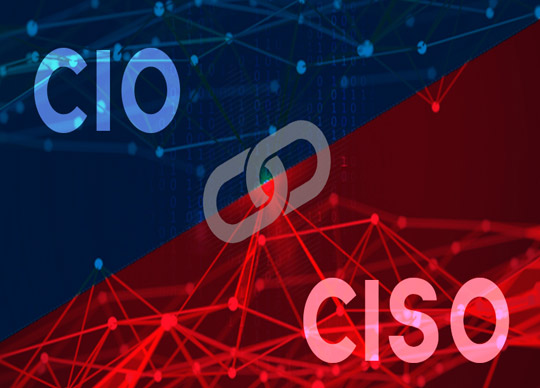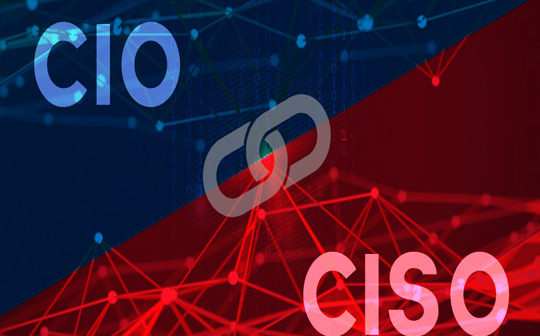
By Guy Matthews, Editor of NetReporter
Everyone is agreed that the events in the past year have added a lot of fire and urgency to digital transformation. But what does that look like on the ground, at the enterprise coalface? Who is deploying what, and why?

Dustin Kehoe
To delve a little deeper into this issue, independent analyst firm GlobalData looked at its extensive database of CIO and CISO names to see what they have been spending on ICT services and where the money is going. Dustin Kehoe, Director, Research APAC & MEA Regions with the firm, was especially interested to drill down into what’s happening in Singapore: “We looked at 3,000 accounts there, and right away noticed a dramatic increase of over 6% in spending in 2020 compared to 2019,” he notes. “We expect that trend to continue. We’ve never seen a dramatic increase like that in Singapore before.”
So where did all this spending go? Kehoe says the top investment areas were networking, cloud and data centre and security: “In terms of vertical markets, I see these three as increasingly interlinked,” he believes. “The biggest growth areas for ICT spending we found to be healthcare, consumer goods and retail.”
But what is the agenda that drives this all this transformation? What are the business drivers? “A business might want to move into an adjacent market, they might want to improve operational efficiencies,” speculates Kehoe. “For that they need an IT system that’s not going to tell them that a workflow that makes sense is not possible because it’s not supported.”
He gives the example of China and Live Streaming eCommerce: “It’s a $60 billion industry and it works by instead of me transacting and buying my shopping online, I join up, via virtual reality, with celebrities and influencers and ask them questions directly in a live environment. They give me advice on the products that I’m interested in, phones, lipstick or whatever. It’s the biggest growing live streaming industry in the market, and would not be possible without an amazing customer experience that is all about high capacity video, low latency networks, and a lot going on in between to create a look and feel that is like real time. Behind it all is a cloud-native platform.”
As for other enabling technologies, Kehoe believes in APIs as important for promoting interoperability, as well as containers and microservices, and he sees a need for open source to change the culture through DevOps.
“But IT cannot do everything alone,” he warns. “IT and line of business need to work with each other to create a change management framework. Without that you do not have transformation. We do not see digital transformation as just an IT project. We see it as a collection of many projects, multiple projects and skill sets and capabilities you bestow on an organization, so they can deliver their goods and services and bring them to market differently. That is why it is increasingly interlinked, interdependent to business outcomes.”
Units of compute, network and storage are getting smaller and smaller, notes Kehoe, and that means CIOs must start to think of infrastructure in terms of code: “It’s about scalable applications, deployed without thinking about what sits beneath the hood. We want speed and agility without compromising security and compliance. You move too fast, you get security breaches. You move too slow you’ve lost the pace, your competitors have developed, you’re losing market share and your physical customers have gone elsewhere.”
Further ahead, Kehoe sees cloud and networking evolving to be both interdependent and highly decentralized: “Different types of networks, multi-service networks, will be running different sorts of cloud environments. We’re also going to go from hybrid to multiple clouds, and underpinning all of this is SASE, identity and access management, data loss prevention and governance along with various methodologies.”
To broaden the conversation on network transformation, Kehoe checked in with some leaders in the tech space to hear what they think, and also what their customers are saying.
“COVID has accelerated digitization needs in both the consumer and corporate sectors,” notes Andrew Yeong, VP & Head Asia Pacific with Tata Communications. “We see from all sides an increasing use of work-from-home tools, and increasing cloud to cloud data communication. All this needs speed, accessibility and mobility at the same time. What’s changing as well is the security component. These are the areas we are looking at with our customers. We’re also looking at moving from traditional remote VPN access to corporate networks of the past to faster, more secure methods like SASE. We’re also looking at the customer experience. We have customers like banks and manufacturers who demand the highest service levels in quality from us. They want omni-channel, and they want it anytime, anywhere. This all has to be done in a very agile and responsive fashion so whatever applications we build, whatever design of platforms we choose, it has to be self-service.”
If the role of a bank is to deposit money and transfer money via a network, then the availability of that network is of paramount importance, says Richard Christopher, Global Head of Network Services with Standard Chartered bank. “The expectation is that the network is frictionless. Its presence should never be felt. It needs the scalability, resiliency and the security to make it to deliver the bank’s digital agenda and the bank’s future strategy. In that sense the importance of the network has never been greater. And now clouds are an integral part of any global network solution.”

Richard Christopher
Christopher says another key component is cyber: “The role of the network is changing so as to be not just transport but also a means to provide cyber risk reduction and protection of critical assets.”

Terence Mccabe
Security is front and centre to any ICT investment strategy, agrees Terence McCabe, Chief Technology Officer for Asia Pacific and Japan with Nokia: “We have seen that many of the security threats that we that we face and many of the infrastructural issues that have arisen recently don’t happen in agile environments,” he says. “Static environments and are often the most at risk. You’re working against a continuously changing set of threats, so it’s important that your defences are changing in a similar manner, and are using the best available technology and methodologies. If you look at AI for threat detection as an example, that’s evolving incredibly quickly, and anyone who isn’t using that is leaving themselves exposed as a result. I don’t think it’s a choice between agility and security. Agility can contribute to security and we should look at it in that way.”
McCabe sees 5G as a critical piece of the jigsaw: “It’s a large step beyond what we’ve seen with previous generations of mobile network,” he points out. “As the 5G network expands it gives us a network that is that is sliceable, that can have dedicated quality of service and dedicated security domains associated with specific applications with specific use cases. Perhaps in a manufacturing plant or in a warehouse, you deploy private networking technologies to support your automation needs. But as the workload moves out of that controlled environment it may move into an environment where the wide area you use is a slice of a public network. End to end use cases are already being developed, and there’s some tremendous opportunities there.”

Angus Luk
Angus Luk, CTO Smart Retail with Lenovo, agrees with this vision: “We are a PC manufacturer and we try to adopt a lot of 5G connectivity in our devices,” he expands. “5G is a purpose-built piping network and I think there is a lot of evolution that we will see in the coming years. On top of that there’s edge computing where we will also see a lot of technology transformation.”

Andrew Yeong
Yeong of Tata Communications says 5G and other new technologies offer a way for Tata and other telcos to look at ways to serve their customers better: “One of the new initiatives that we have, for example, will be shipping out some form of low-cost CPE,” he explains. “That allows for pop up stores or a pop-up network. We are doing this for luxury brands. That is going to change the way they do business in the future. How will 5G replace Wi Fi at home? Will a home become the new subdomain of an office for example? These are the trends that we are watching. We remain flexible to make sure that we hear our customers and pursue the innovation that is necessary. New use cases are just exploding across all sectors.”
Christopher of Standard Chartered looks forward to newer tools to allow workers to collaborate and to connect with each other and with customers: “They need the same or better ways to do what they were doing in the office previously. The way that organizations now adopt ways of working will be a talent differentiator, helping to attract better people in the future.”
Links to the organisations participating in the CxO roundtable are as follows:
GlobalData
Lenovo
Nokia
https://disruptive.asia/5g-can-provide-a-new-powerful-edge-for-industrial-iot-iiot/
Standard Chartered
Tata Communications
https://www.tatacommunications.com/blog/author/andrew-yeong/
For further reading/viewing on these themes:
https://www.youtube.com/watch?v=TTsrlt3qN9E






